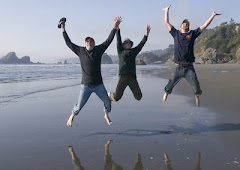Last week I went to Placitas to see my old house. Or rather I went to see what was left of my old house. Actually, all I saw was the place of my old house. My neighbors had told me years ago that the folks who bought the house built onto and around it, kind of like folks who build onto or around a trailer to turn it into a more solid construction; but my house, an adobe for god’s sake, was nowhere to be found.
Neither were the fruit trees, the cottonwoods, the native grass, the rock gardens, the vegetable and flower gardens Mark and I spent fifteen years cultivating, carefully meting out the precious water that is pumped from hundreds of feet below ground. I guess when they took off the second story, added on rooms (including one at the west end with a turret) and then put on a different second story, the vegetation got in the way. This one now resembles a lot of the houses built over the twenty years I’ve been away: solar adobe style, boxy, oversized, characterless.
Our handmade houses were something different. In the 1960s, when the back to the land movement stumbled into Placitas, a land grant community at the north end of the Sandia Mountains, some folks emulated the traditional building style of the long time Hispano residents of the village. Others saw homebuilding as venues for their creativity, constrained only by the capacity of their pocket books. Ours was somewhere in between: a two story adobe with a gambrel roof (double pitch) built around second-hand doors and windows that we brought home from wherever we could find them: Coronado Lumber in Albuquerque, the Air Force Academy in Colorado Springs, and Buffalo, New York, where Mark had friends in the antique business. It took five years of building before we moved in, ten years to “finish” (adding the greenhouse, putting in a bathroom upstairs, but you never really finish a handmade house), and one year to sell.
Many of our compadres’ creations are still there: Cathy’s Dome out on the mesa; Rumaldo’s ranchito on lower Las Huertas Creek; the crumbling adobe in the village where Mark and I lived while we built our new house; the triple dome and solar dome (where we fell in love) in Dome Valley, and Daisy’s carefully crafted compact house on a windswept hill (thank you for being my companion on this nostalgic trip). But what Placitas mostly is are the thousands of new homes that beginning in the 80s the developers aggressively marketed to attract Albuquerque commuters, retirees, and second homeowners. From I-25 east you pass La Mesa, Tierra Madre, Placitas Homesteads, Ranchos de Placitas, Placitas West, Puesta del Sol, and the Overlook, among others, until a sign on the road tells you you’re now entering the Historic Village of Placitas.
Placitas is not unique, of course. Things change (just ask the land grant community). People build houses. Developers build many houses. In El Valle, where I now live, we suddenly have second homes. But Placitas is emblematic of a consumer culture that is the basis of this country’s power and wealth. We became the “primary engine of capital accumulation” (David Harvey), which vastly increased the infrastructure necessary to support this kind of massive suburbanization. The housing boom in the 90s exacerbated the overbuilding and created the upper middle class culture that now dominates Placitas. Now, in the 2000s, there must be a slew of foreclosures and some nail-biting developers who won’t survive the housing bust, but the damage has been done: loss of the commons, validation of yuppie culture, and the mining of the already limited water resources of a semi-arid environment.
So we left, and it took me 20 years to go back (I’ve now lived in El Valle as long as I lived in Placitas). My friends who stayed say they drive up the road alongside the “Homesteads” and “Ranchos” with their eyes pointed straight ahead, following the route home without looking. When they take their morning walk up the hill and see another road bladed through the desert, they look away. They’re attached to their homes and their history in the crazy, mixed up place Placitas was and is. I prefer the was.
Monday, March 19, 2012
Subscribe to:
Posts (Atom)
